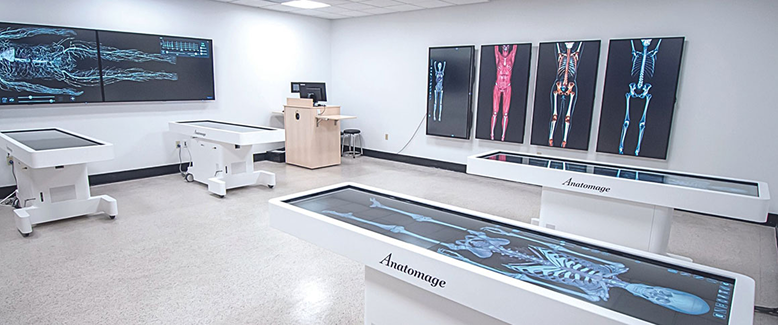Medical Education in India with Virtual Dissection and 3D Anatomy Table
The landscape of medical education in India is undergoing a transformative shift with the introduction of cutting-edge technologies like the anatomy table, virtual dissection table, and digital dissection table. As traditional cadaver-based learning faces ethical, logistical, and resource-related challenges, tools like the 3D anatomy table and Anatomage have emerged as groundbreaking alternatives.
What is an Anatomy Table?
An anatomy table is a life-sized digital interface that simulates the human body in exquisite detail. These tables use advanced imaging technologies such as CT, MRI, and real anatomical data to allow students to interactively explore human anatomy. Unlike traditional cadaveric dissections, anatomy tables provide a clean, ethical, and repeatable learning experience.
In India, where medical colleges often deal with cadaver shortages and increasing student populations, the adoption of virtual dissection tools is proving invaluable.

The Rise of Virtual Dissection in India
The virtual dissection table is at the forefront of this educational revolution. By integrating 3D visualization and digital controls, these tables enable medical students and professionals to “dissect” virtual bodies layer by layer. This not only enhances understanding but also reduces the dependency on physical cadavers.
Some of the best medical institutions in India are already incorporating digital dissection tables into their curriculum, recognizing the long-term benefits of interactive and immersive anatomy education.
Advantages of a 3D Anatomy Table
The 3D anatomy table offers several educational benefits:
- Highly Detailed Visualization: Students can zoom in on minute anatomical structures that are difficult to observe in traditional dissections.
- Interactive Learning: The ability to rotate, slice, and explore organs in 3D makes it easier for students to grasp complex anatomical relationships.
- Multisystem Integration: These tables allow simultaneous viewing of different body systems — skeletal, muscular, nervous, and more.
- Radiological Correlation: Many digital dissection tables include radiographic data, enabling students to correlate clinical imaging with anatomical structures.
Such capabilities make the virtual dissector not just a substitute for traditional methods but an upgrade that aligns with modern medical training needs.

Anatomage: A Leader in Digital Anatomy
One of the most recognized names in this space is Anatomage. The Anatomage Table is widely considered the gold standard for virtual dissection platforms. In India, this system is gaining popularity in medical universities, dental colleges, and even veterinary schools.
The Anatomage Table provides real cadaver scans and includes male and female anatomical datasets. Students can perform virtual autopsies, simulate surgeries, and test their diagnostic skills — all without the limitations of traditional dissection.

How Virtual Dissection is Changing Indian Classrooms
Incorporating virtual dissection into Indian classrooms is making anatomy education more inclusive, especially in rural or underfunded medical colleges. These digital platforms can also be integrated into online learning, offering students remote access to high-quality anatomy training.
Moreover, institutions using digital dissection tables report improved student engagement, higher exam performance, and better conceptual retention.
Future of Anatomy Learning in India
With the continued digitization of education, 3D anatomy tables and virtual dissectors are likely to become standard tools in Indian medical institutions. Government initiatives and private partnerships are also expected to play a role in accelerating adoption.
As more universities embrace these technologies, India is poised to become a leader in tech-integrated medical education. Whether it’s through the adoption of Anatomage, other digital dissection platforms, or custom-built anatomy tables, the future of learning human anatomy in India looks highly promising.
The integration of virtual dissection tables, digital anatomy tools, and 3D anatomy platforms is revolutionising the way anatomy is taught and learned in India. As the country continues to modernize its medical education infrastructure, tools like Anatomage and virtual dissectors are not just options they are becoming necessities.
With continued investment and awareness, the use of anatomy tables in India will help shape a new generation of highly skilled and digitally savvy healthcare professionals.
For more information, please visit: https://mavericksimulation.com/
Comments
Post a Comment